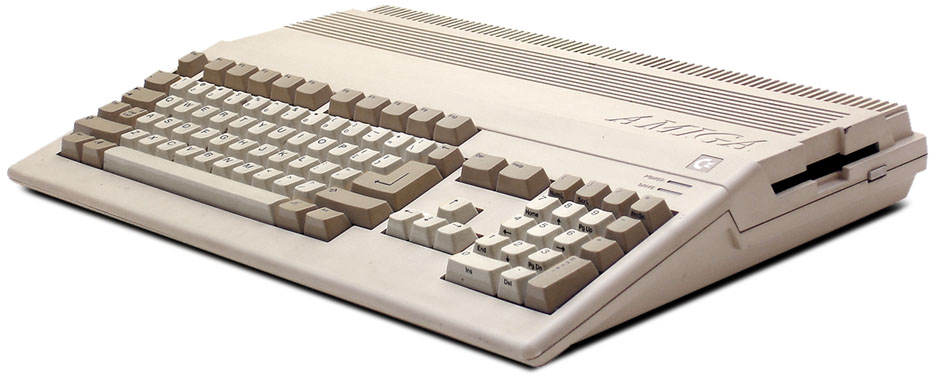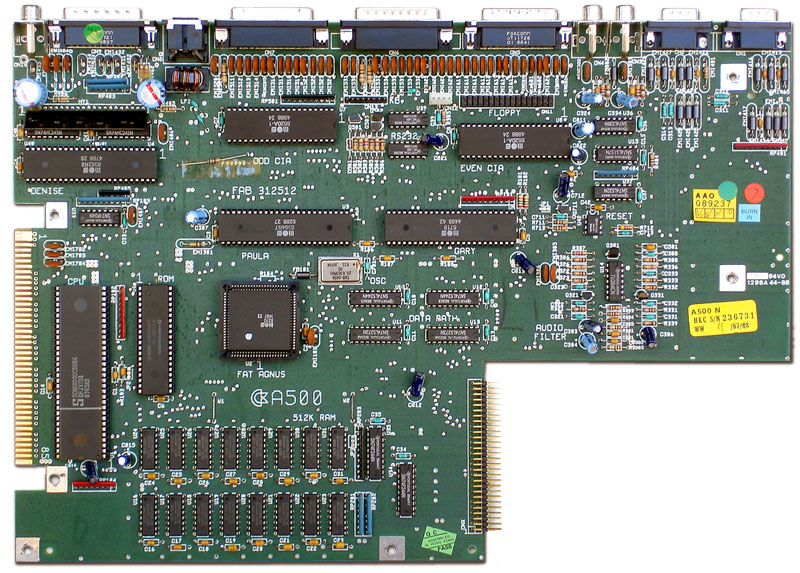| Amiga 2000 | 1987 | 68000 @ 7.14 MHz | 16 colors at 640 X 400
32 colors at 320 X 400 | Desktop, 512K RAM, 7 internal expansion slots |
| Amiga 3000 | 1990 | 68030 @ 16 or 25 MHz | 4 colors at 1280 X 400
32 colors at 320 X 400 | Desktop, 2M RAM, 4 internal expansion slots |
| CDTV | 1991 | 68000 @ 7.14 MHz | 16 colors at 640 X 400
32 colors at 320 X 400 | CD-ROM based entertainment system |
| Amiga 600 | 1992 | 68000 @ 7.14 MHz | 4 colors at 1280 X 400
32 colors at 320 X 400 | "wedge", 1M RAM, internal hard drive |
| Amiga 4000 | 1992 | 68040 @ 25.0 MHz | 1280 X 400 to 800 X 600 resolution, 256 colors max. | Desktop, 18M RAM, 4 internal expansion slots |
| Amiga 1200 | 1992 | 68020 @ 14.3 MHz | 1280 X 400 to 800 X 600 resolution, 256 colors max. | "wedge", 2M RAM, internal hard drive |
| CD32 | 1993 | 68020 @ 14.3 Mhz | 1280 X 400 to 800 X 600 resolution, 256 colors max. | CD-ROM based game system |



